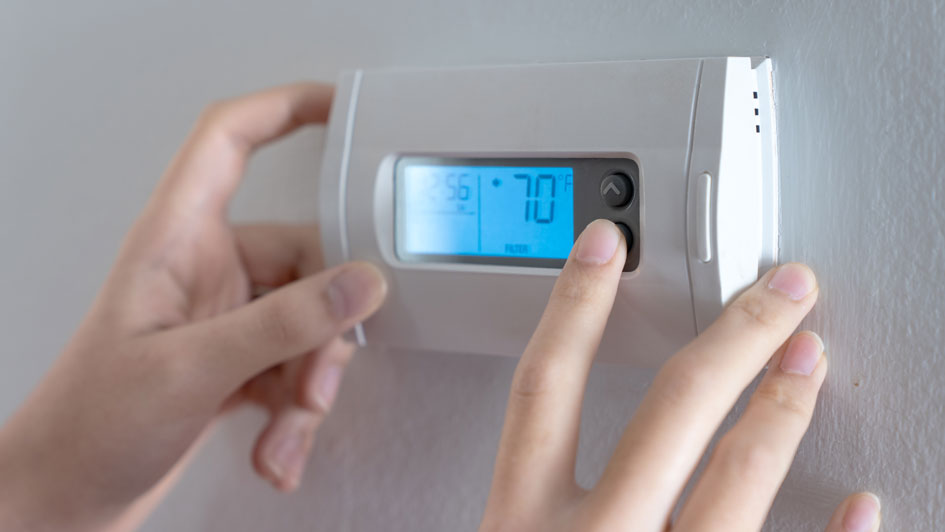
Everyone’s always looking to save money on their utility bills, but you should know there’s a way to keep costs down, even when you're out of the house.
The secret is your thermostat. By using automatic schedules, you can help the thermostat plan for your preferred temperatures. That means you can have different temperature settings for when you’re at home, away or even when you’re asleep.
With a few simple adjustments, you'll be able to enjoy comfortable temperatures while keeping more money in your pocket. Check out our guide on how your thermostat can be a source of energy savings:
While at Home
Pretty much whenever you're home, you want comfortable temperatures. It's only natural to want your thermostat lower in the summer if you're indoors to appreciate the cool air.
But in terms of energy efficiency, the best range for when you're in your home during the summer is actually around 78 and 80 degrees Fahrenheit. This way, you'll avoid the worst of summer while still lowering your monthly energy bill.
While Away
When it comes to setting the temperature for when you are out of the house in summer, it’s advantageous to set the thermostat higher than you would if you were in the house.
If your home is located somewhere a little cooler, you can set the temperature as high as 88 degrees while no one is home before lowering it back to the sweet spot of 78-80 degrees when you or a family member return. This way, your air conditioning won't have to work constantly to provide cooling for a bunch of empty rooms.
While Sleeping
To enjoy a good night's sleep during the summer, you want your thermostat set at a comfortable temperature. A great place to start is between 68-72 degrees Fahrenheit. This will keep you from getting too hot or too cold while you're trying to sleep.
Other Ways to Use Less Energy:
- Install a smart thermostat: Using a smart thermostat in the summer is an excellent way to reduce energy costs since it can plan your temperature adjustments according to your lifestyle and idea of what comfortable is. They can lower the temperature while you are home or sleeping, before allowing it to warm up when no one is around. With models like the Lennox iComfort, you are able to adjust settings and schedules through your smartphone, tablet or laptop. Scheduling smart thermostat installation in your Haines City home is an effortless way to set the correct temperature whether you're at home or across the country.
- Replace current equipment with a newer HVAC system: A new HVAC system saves money right from the start. With greater energy efficiency, your utility bills will be lower because it requires less energy to heat and cool your home. Air conditioning installation in Haines City is a great way to beat the heat in the summer.
- Stay on top of routine AC maintenance: Investing in or ignoring regular air conditioning maintenance in Haines City can have a significant impact on your utility bills. With regular cleaning of the coils, checking for damage and keeping vents clear of dust and debris, this can help your HVAC system perform better during day-to-day use.. More efficient operation reduces strain on the unit and lowers operational costs, lowering total energy use and eventually the total monthly bill.
- Replace your air filter regularly: A regular schedule for cleaning or replacing the HVAC system's air filter saves money by keeping airflow as smooth and consistent as possible. When filters become clogged, air conditioners have to work harder, and this greater strain could shorten the system’s life span and lead to breakdowns.
- Check your attic insulation: Insulation is one of the key components in any energy-efficient home, keeping the hot air outside and the cool air inside over the summer. The North American Insulation Manufacturers Association (NAIMA) offers an official recommendation stating homeowners in souther states should have at least 13-14 inches of insulation, while those in northern U.S. states should have 16-18 inches.
- Check your ductwork: Leaky ductwork can raise your energy bills much more than 20 percent, plus it can affect equipment such as your water heater, clothes dryer and other appliances throughout your home. Checking your ductwork for leaks and sealing them can fix both of those problems.
- Seal all other leaky spots in your home: Sealing up other leaks in your home with caulk, foam sealant or weather-stripping keeps temperatures a little cooler on hot summer days. It’s also important to check for any gaps around windows, doors and even outdoor fixtures. Devoting time and effort to sealing leaks now can help you save a lot over time.
